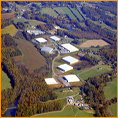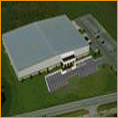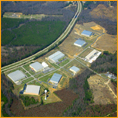The phrase, “if you build it, they will come” is not always true. However, the opposite is always true, particularly when it comes to infrastructure. We can build an industrial building almost anywhere; but, if there is no power or water, it is really of no more useful than a tent.
We have been searching out new industrial park locations across the Southeast and keep running into well-situated land that has little or no infrastructure to allow the land to be developed. One would think that utility companies are in the business of building their systems out to attract more paying customers. Shockingly, this is rarely the case.
Today’s regulated utilities are only allowed to build for identified and committed customers. This is putting a drag on industrial growth, particularly on the electrical utility side. Transformers and sub-station gear for large industrial users can take 60 weeks or more to deliver after an order. Water and sewer system constraints are also very long lead times if a utility needs to add more sewer capacity or increase the potable water supply. Projects for water and sewer system capacity expansions are measured in 5-year time frames.
The lengthy time to deliver these necessary infrastructure systems demands that the utility companies get more proactive in their demand planning to stay ahead of the curve. Instead, they wait for developers to come and ask for extensions of their systems. The answer is usually along the lines of, “we can do that, but it is going to cost you.”
This puts the burden on the developer to pay for utility infrastructure that not only the developer will use but other utility customers as well. We have recently been working with communities that recognize the trap of having no land with utilities available. These forward-looking communities recognize that they are using the developer like a lender to finance the infrastructure extensions the community needs to grow. We have been able to negotiate a variety of Tax Increment Financing structures to repay our investment in the community’s infrastructure. This is a win for the community as it gains tax revenue and strengthens their local economy. The new revenue stream starts small but grows quickly as new industries locate in their community. Both the community and the developer benefit as new companies are attracted. But remember, if you don’t build it, they won’t come!



